-
Effects of Melatonin on Sleep Quality and Patient-Reported Outcomes After Arthroscopic Rotator Cuff Surgery: A Prospective Randomized Controlled Trial Am. J. Sports Med. (IF 4.2) Pub Date : 2024-09-17 Andres R. Perez, Henson Destiné, Neel K. Patel, Richard E. Campbell, Rahul Muchintala, Anya T. Hall, Matthew D. Pepe, Bradford S. Tucker, Fotios P. Tjoumakaris
Background:Sleep disturbance is a significant symptom associated with both rotator cuff tears and arthroscopic rotator cuff repair. Melatonin has been shown to be safe and effective in managing multiple sleep disorders, including secondary sleep disorders, with relatively minor adverse effects and lack of addictive potential.Purpose:To investigate the effects of oral melatonin on postoperative sleep
-
Prevalence of Abnormalities and Normal Variants in the Adolescent Knee on MRI in a Population-Based Cohort of 3800 Knees Am. J. Sports Med. (IF 4.2) Pub Date : 2024-09-17 Laura A.M. Kemmeren, Edwin H.G. Oei, Marienke van Middelkoop, Denise Eygendaal, Tom M. Piscaer
Background:Many adolescents experience knee pain, and only some undergo detailed imaging. In this population, the prevalence of abnormalities and normal variants on magnetic resonance imaging (MRI) scans is unknown.Purpose:To investigate the prevalence of abnormalities and normal variants of the knee on MRI scans and their relationship with participant characteristics in the general young adolescent
-
Arthroscopic Centralization of the Medial Meniscus Reduces Load on a Posterior Root Repair Under Dynamic Varus Loading: A Biomechanical Investigation Am. J. Sports Med. (IF 4.2) Pub Date : 2024-09-17 Adrian Deichsel, Christian Peez, Michael J. Raschke, R. Geoff Richards, Boyko Gueorguiev, Ivan Zderic, Elmar Herbst, Christoph Kittl
Background:In addition to the integrity of the meniscal hoop function, both the anterior and posterior meniscus roots as well as the meniscotibial and meniscofemoral ligaments are crucial in restraining meniscal extrusion. However, the interaction and load sharing between the roots and these peripheral attachments (PAs) are not known.Purposes:To investigate the influence of an insufficiency of the
-
A Prospective, Randomized, Double-Blind Clinical Trial to Investigate the Efficacy of Autologous Bone Marrow Aspirate Concentrate During Arthroscopic Meniscectomy in Patients With Early Knee Osteoarthritis Am. J. Sports Med. (IF 4.2) Pub Date : 2024-09-17 Adam B. Yanke, Allen A. Yazdi, Alexander C. Weissman, Kyle R. Wagner, Zachary D. Meeker, Nolan B. Condron, Reem Y. Darwish, Justin Drager, Richard M. Danilkowicz, Brian Forsythe, Nikhil N. Verma, Brian J. Cole
Background:Despite being recognized as a safe procedure with minimal reported complications, injecting autologous bone marrow aspirate concentrate (BMAC) as an adjuvant to arthroscopic partial meniscectomy (APM) for symptomatic patients with meniscal tears and concomitant knee osteoarthritis (OA) has not been studied in randomized controlled trials.Purpose:To compare patient-reported outcome measure
-
Predictors of Clinical Outcomes and Quality of Life After Sternoclavicular Joint Reconstruction With Hamstring Tendon Autograft Am. J. Sports Med. (IF 4.2) Pub Date : 2024-09-14 Marco-Christopher Rupp, Annabel R. Geissbuhler, Joan C. Rutledge, Marilee P. Horan, Phob Ganokroj, Peter Chang, Matthew T. Provencher, Peter J. Millett
Background:Anterior instability of the sternoclavicular joint (SCJ) is a rare but potentially devastating pathological condition, particularly when it occurs in young or active patients. SCJ reconstruction using hamstring tendon autograft is a commonly used treatment option, yet to date results are limited to small case series. Studies on baseline, preoperative factors and their association with postoperative
-
Relationship Between Neighborhood-Level Socioeconomic Status and Functional Outcomes After Hip Arthroscopy Am. J. Sports Med. (IF 4.2) Pub Date : 2024-09-14 Jonathan S. Lee, Rohit R. Rachala, Stephen M. Gillinov, Bilal S. Siddiq, Kieran S. Dowley, Nathan J. Cherian, Scott D. Martin
Background:Despite the growing volume of neighborhood-level health disparity research, there remains a paucity of prospective studies investigating the relationship between Area Deprivation Index (ADI) and functional outcomes for patients undergoing hip arthroscopy.Purpose:To investigate the relationship between neighborhood-level socioeconomic status and functional outcomes after hip arthroscopy.Study
-
-
Nonoperative Treatment of Completely Displaced Midshaft Clavicular Fractures in Teenagers: Response Am. J. Sports Med. (IF 4.2) Pub Date : 2024-09-14 Andrew T. Pennock
-
Nonoperative Treatment of Completely Displaced Midshaft Clavicular Fractures in Teenagers: Letter to the Editor Am. J. Sports Med. (IF 4.2) Pub Date : 2024-09-14 Jingzhi Wang, Yulu Rao, Yuanmin Zhang
-
Factors Influencing Long-term Outcomes After Matrix-Induced Autologous Chondrocyte Implantation: Long-term Results at 10 Years Am. J. Sports Med. (IF 4.2) Pub Date : 2024-09-14 Johannes Weishorn, Johanna Wiegand, Severin Zietzschmann, Kevin-Arno Koch, Christoph Rehnitz, Tobias Renkawitz, Tilman Walker, Yannic Bangert
Background:Matrix-induced autologous chondrocyte implantation (MACI), the third-generation of the technique, is an established procedure for the treatment of focal cartilage defects in the knee. However, the literature lacks long-term results of MACI with good statistical power.Purpose:To determine long-term survival and patient-reported outcomes (PROs) in a representative cohort and to identify patient-
-
Effect of Medial or Lateral Graft Failure on Graft Volume and Clinical Outcomes After Superior Capsule Reconstruction for Irreparable Rotator Cuff Tears Am. J. Sports Med. (IF 4.2) Pub Date : 2024-09-14 Sang-Jin Shin, Sanghyeon Lee
Background:Graft failure is a common complication after superior capsule reconstruction (SCR). The graft in SCR is fixed on the greater tuberosity and superior glenoid, and graft failure has been reported on both sides.Purpose:To evaluate the clinical manifestations of patients with graft failure after SCR and identify the clinical and radiological differences between medial and lateral graft failure
-
Nonoperative Management of High Ankle Sprains: A Case Series With ≥18-Year Follow-up Am. J. Sports Med. (IF 4.2) Pub Date : 2024-09-07 Eric D. Nussbaum, Jeremy Silver, Aleksandr Rozenberg, Natale Mazzeferro, Patrick S. Buckley, Charles J. Gatt
Background:High ankle sprains are common athletic injuries and can be associated with long-term sequelae. Regardless of operative or nonoperative treatment, there is a paucity of data in the literature about the long-term outcomes of high ankle sprains.Hypothesis:Nonoperative treatment of high ankle sprains utilizing a standardized protocol will result in good long-term outcomes.Study Design:Case series;
-
Risk Factors for Nonunion After Nonoperative Treatment for Pediatric Lumbar Spondylolysis: A Retrospective Case-Control Study Am. J. Sports Med. (IF 4.2) Pub Date : 2024-09-02 Kohei Kuroshima, Shingo Miyazaki, Yoshiaki Hiranaka, Masao Ryu, Shinichi Inoue, Takashi Yurube, Kenichiro Kakutani, Ko Tadokoro
Background:Pediatric lumbar spondylolysis, a stress fracture of the lumbar spine, frequently affects young athletes, and nonoperative treatment is often the first choice of management. Because the union rate in lumbar spondylolysis is lower than that in general fatigue fractures, identifying risk factors for nonunion is essential for optimizing treatment.Purpose:To determine the risk factors for nonunion
-
The Arthroscopically Guided Bristow-Latarjet Procedure With Cortical Button Fixation: A Minimum 10-Year Follow-up Am. J. Sports Med. (IF 4.2) Pub Date : 2024-09-02 Jules Descamps, Valentina Greco, Mikael Chelli, Pascal Boileau
Background:Despite improved visualization, the use of arthroscopic surgery to perform the Latarjet procedure has not decreased the rates of complications and glenohumeral osteoarthritis (OA) in the long term. Many of the reported complications are related to the use of screws for bone block fixation with freehand drilling.Purpose:To evaluate the long-term (at a minimum 10-year follow-up) clinical and
-
Characteristics and Outcomes of Operatively Treated Discoid Lateral Meniscus in Pediatric and Young Adult Patients: A Multicenter Study Am. J. Sports Med. (IF 4.2) Pub Date : 2024-09-02 Jennifer A. Sheasley, Julia C. Kirby, Emily L. Niu, Maya Gopalan, Sasha Carsen, Zachary S. Stinson, Craig J. Finlayson, Marie-Lyne Nault, R. Jay Lee, Brian M. Haus, Daniel W. Green, John A. Schlechter, Jennifer Beck, Benton Heyworth, Tyler Stavinoha, Jie C. Nguyen, Gregory A. Schmale
Background:Discoid lateral meniscus (DLM) is the most common congenital abnormality of the meniscus. Tears are common; treatment is frequently not definitive, often requiring reoperation.Purpose:To report the clinical manifestations, physical characteristics, operative treatments and findings, complications, and reoperations of DLM in pediatric patients from multiple centers across North America.Study
-
Reduced Knee Flexion Strength 18 Years After ACL Reconstruction With Hamstring Tendon Versus Patellar Tendon Am. J. Sports Med. (IF 4.2) Pub Date : 2024-09-02 Marko Popovic, Julie Rikke Myhre, Julie Iren Haugseth Holen, Tone Gifstad, Ingebjorg Lokensgard Strand, Torbjorn Strand, Ingunn Fleten Mo, Cornelia Fischer-Bredenbeck, Jon Olav Drogset
Background:Bone–patellar tendon–bone (BPTB) and double-looped semitendinosus and gracilis (hamstring) grafts are commonly used for anterior cruciate ligament (ACL) reconstruction. Short-term and midterm studies show little or no differences between the 2 grafts; however, there are only a few long-term studies to compare results between the 2 grafts.Purpose:To compare the results after using either
-
A Comparison of Throwing Arm Kinetics and Ball Velocity in High School Pitchers With Overall Fast and Overall Slow Cumulative Joint and Segment Velocities Am. J. Sports Med. (IF 4.2) Pub Date : 2024-09-02 Joseph E. Manzi, Brittany Dowling, Zhaorui Wang, Suleiman Y. Sudah, Brockton A. Dowling, Mark Wishman, Kathryn McElheny, Joseph J. Ruzbarsky, Brandon J. Erickson, Michael C. Ciccotti, Michael G. Ciccotti, Joshua S. Dines
Background:Individual maximum joint and segment angular velocities have shown positive associations with throwing arm kinetics and ball velocity in baseball pitchers.Purpose:To observe how cumulative maximum joint and segment angular velocities, irrespective of sequence, affect ball velocity and throwing arm kinetics in high school pitchers.Study Design:Descriptive laboratory study.Methods:High school
-
Ten-Year Outcomes in Patients Aged 40 Years and Older After Primary Arthroscopic Treatment of Femoroacetabular Impingement With Labral Repair Am. J. Sports Med. (IF 4.2) Pub Date : 2024-08-30 Benjamin G. Domb, Jade S. Owens, Ajay C. Lall, W. Taylor Harris, Benjamin D. Kuhns
Background:Arthroscopic labral repair has been shown to result in favorable short- and midterm outcomes; however, the durability of outcomes specifically in older patients remains underreported.Purpose:To (1) report prospectively collected hip preservation rates and patient-reported outcome measures (PROMs) at a minimum 10-year follow-up in patients aged ≥40 years after primary hip arthroscopy with
-
Alpha-2-Macroglobulin Attenuates Posttraumatic Osteoarthritis Cartilage Damage by Inhibiting Inflammatory Pathways With Modified Intra-articular Drilling in a Yucatan Minipig Model Am. J. Sports Med. (IF 4.2) Pub Date : 2024-08-30 Changqi Sun, Kenny Chang, Braden C. Fleming, Brett D. Owens, Jillian E. Beveridge, Yu Zhao, Guoxuan Peng, Lei Wei
Background:Posttraumatic osteoarthritis (PTOA) arises secondarily to joint trauma and is driven by catabolic inflammatory pathways. Alpha-2-macroglobulin (α2M) is a naturally occurring proteinase inhibitor found in human serum and synovial fluid that binds proteases as well as proinflammatory cytokines involved in the pathogenesis of PTOA.Purpose:(1) To investigate the therapeutic potential of intra-articular
-
Load Distribution After Serial Resection of the Posterior Horn of the Lateral Meniscus and Subsequent Meniscal Allograft Transplant: A Biomechanical Study Am. J. Sports Med. (IF 4.2) Pub Date : 2024-08-30 Luiz Felipe Ambra, Alexandre Barbieri Mestriner, Jakob Ackermann, Enzo S. Mameri, Andreas H. Gomoll
Background:Data are lacking as to when a meniscal allograft transplant (MAT) may be biomechanically superior to a partially resected lateral meniscus.Hypothesis:Lateral MAT using a bone bridge technique would restore load distribution and contact pressures in the tibiofemoral joint to levels superior to those of a partial lateral meniscectomy.Study Design:Controlled laboratory study.Methods:Eleven
-
Isokinetic Strength and Balance Analyses for Predicting Return to Sports After the Latarjet Procedure: A Prospective Cross-sectional Study Am. J. Sports Med. (IF 4.2) Pub Date : 2024-08-30 Mohamad K. Moussa, Badr El Hariri, Nicolas Lefèvre, Olivier Grimaud, Pierre Alban Bouché, Yoann Bohu, Zeinab Khalaf, Jean-David Werthel, Antoine Gerometta, Alexandre Hardy
Background:Isokinetic torque in shoulder internal rotation (IR) and external rotation (ER) can be considered as potential indicators for dynamic stability of the glenohumeral joint.Purpose:To assess the efficacy of 4-month isokinetic testing in predicting the 6-month return-to-sports (RTS) status after Latarjet surgery, explore its correlations with testing parameters, and identify optimal thresholds
-
Differences in Graft Tear Configurations in Medial and Lateral Meniscal Allograft Transplantation: Objective Evaluations Using Magnetic Resonance Imaging Am. J. Sports Med. (IF 4.2) Pub Date : 2024-08-30 Jongjin Lee, Jong-Min Kim, Bum-Sik Lee, Seong-Il Bin, Taehyeon Jeon, Kinam Bae, Donghyok Kim
Background:Few studies have compared the characteristics of meniscal allograft tears between medial and lateral meniscal allograft transplantation (MAT) using bone fixation.Purpose:To investigate the prevalence, location, and patterns of allograft tears after MAT with the bone fixation technique and compare tear patterns between medial and lateral compartments according to the time elapsed after surgery
-
The Development and Execution of An Orthopaedic Sports Medicine Fellowship Surgical Skills Assessment Am. J. Sports Med. (IF 4.2) Pub Date : 2024-08-29 Ryan R. Thacher, Alexander E. White, Christopher L. Camp, Matthew J. Matava, Jeffrey R. Dugas, Anil S. Ranawat
Background:Assessment of orthopaedic surgery trainees is traditionally based on subjective evaluation by faculty. The recent push for value-based health care has placed a premium on improving patient outcomes. As a result, surgical training evaluations for orthopaedic trainees are evolving to include more objective measures to evaluate competency.Purpose:To develop and subsequently demonstrate the
-
Implications for Femoral Tunnel Placement in Medial Patellofemoral Ligament Reconstruction Considering the Sagittal Trochlear Groove Curvature in Severe Trochlear Dysplasia Before and After Deepening Trochleoplasty Am. J. Sports Med. (IF 4.2) Pub Date : 2024-08-29 Peter Balcarek, Alexander Zimmerer, Georgi I. Wassilew, Sebastian Gebhardt
Background:Medial patellofemoral ligament reconstruction (MPFL-R) aims to restore proper ligament function with minimal changes in length during range of motion, yet the ideal area for femoral fixation of the graft remains controversial.Purpose:To determine the region where the isometric circular path of a simulated MPFL graft (best-fit circle) follows the sagittal radius curvature of the trochlea
-
Orthostatic Vital Signs After Sport-Related Concussion: A Cohort Study Am. J. Sports Med. (IF 4.2) Pub Date : 2024-08-27 Andrew R. Sas, Michael J. Popovich, Aleah Gillenkirk, Cindy Greer, John Grant, Andrea Almeida, Ingrid K. Ichesco, Matthew T. Lorincz, James T. Eckner
Background:The 6th International Consensus Statement on Concussion in Sport guidelines identified that measuring autonomic nervous system dysfunction using orthostatic vital signs (VSs) is an important part of the clinical evaluation; however, there are limited data on the frequency of autonomic nervous system dysfunction captured via orthostatic VSs after concussion.Purpose:To compare orthostatic
-
Osteochondral Allograft Reaming Significantly Affects Chondrocyte Viability Am. J. Sports Med. (IF 4.2) Pub Date : 2024-08-26 Tristan J. Elias, Sachin Allahabadi, Erik Haneberg, Vince Morgan, Alexandra Walker, Corey Beals, Brian J. Cole, Adam B. Yanke
Background:Chondrocyte viability is associated with the clinical success of osteochondral allograft (OCA) transplantation.Purpose:To investigate the effect of distal femoral OCA plug harvest and recipient site preparation on regional cell viability using traditional handheld saline irrigation versus saline submersion.Study Design:Controlled laboratory study.Methods:For each of 13 femoral hemicondyles
-
Correlation of Player and Imaging Characteristics With Severity and Missed Time in National Football League Professional Athletes With Hamstring Strain Injury: A Retrospective Review Am. J. Sports Med. (IF 4.2) Pub Date : 2024-08-23 Molly A. Day, Lee H. Karlsson, Mackenzie M. Herzog, Leigh J. Weiss, Shane J. McGonegle, Harry G. Greditzer, Vivek Kalia, Asheesh Bedi, Scott A. Rodeo
Background:Hamstring strain injuries (HSIs) are prevalent in US National Football League (NFL) players, but there is a paucity of information regarding imaging characteristics, injury severity, and player factors associated with time missed and risk of recurrent injury.Purpose:To describe player, football activity, clinical, and imaging characteristics of NFL players with HSIs, as well as determine
-
Negative Pain Thoughts Questionnaire Short Form (NPTQ-SF) Scores and Outcomes After Arthroscopic Meniscectomy Am. J. Sports Med. (IF 4.2) Pub Date : 2024-08-23 Brian Johnson, John Bonamer, Cameron Thomson, Jorge Figueras, Nihar Shah, Ramsey Samir Sabbagh, Henry Kuechly, Brian Newyear, Nakul Narendran, Brian Grawe
Background:Pain is multifactorial, and pain intensity has been shown to be influenced by patients’ thoughts. The Negative Pain Thoughts Questionnaire Short Form (NPTQ-SF) can be used to quantify unhelpful negative cognitive biases about pain, but the relationship between negative pain thoughts and orthopaedic surgery outcomes is not known.Purpose:To evaluate the prevalence of negative pain thoughts
-
Vancomycin Soaking to Reduce Intraoperative Contamination by Cutibacterium acnes During the Latarjet Procedure Am. J. Sports Med. (IF 4.2) Pub Date : 2024-08-23 Hugo Barret, Marion Grare, Yoann Dalmas, Mathieu Girard, Pierre Mansat, Nicolas Bonnevialle
Background:Postoperative infection after the Latarjet procedure, ranging from 1% to 6%, can compromise the functional outcome of young athletes. Cutibacterium acnes is a main pathogen as a consequence of an intraoperative contamination.Purpose:To evaluate intraoperative contamination with C. acnes and the effectiveness of the local application of vancomycin during the Latarjet procedure.Study Design:Cohort
-
Effect of Preoperative Lipidemic Control on Retear Rates After Rotator Cuff Repair in Patients With Hyperlipidemia Am. J. Sports Med. (IF 4.2) Pub Date : 2024-08-22 Myung-Seo Kim, Gi-Young Jang, Nam-Su Cho
Background:In patients with hyperlipidemia, the risk of retear increases after rotator cuff repair (RCR). In particular, it has been reported that preoperative low-density lipoprotein cholesterol (LDL-C) level affects cuff integrity. However, there are no studies assessing whether lipidemic control affects cuff healing.Purpose:To evaluate the effect of preoperative lipidemic control on cuff integrity
-
MRI Assessment of Tendon Graft: Letter to the Editor Am. J. Sports Med. (IF 4.2) Pub Date : 2024-08-22 Alexandre Hardy, Arnaud de Rousiers, Grégoire Rougereau, Benoit Rousselin, Tristan Langlais, Marie-Eva Rollet, Manon Bachy, Mohamad K. Moussa, Thomas Bauer
-
MRI Assessment of Tendon Graft: Response Am. J. Sports Med. (IF 4.2) Pub Date : 2024-08-22 Guillaume Cordier
-
Who Is Considered a Pediatric Athlete? Am. J. Sports Med. (IF 4.2) Pub Date : 2024-08-22 Theodore J. Ganley
-
How to Best Identify Acetabular Retroversion on Radiographs: Thresholds to Guide Clinical Practice Am. J. Sports Med. (IF 4.2) Pub Date : 2024-08-22 Jeroen C.F. Verhaegen, Camille Vorimore, Claudia Galletta, Kawan Rakhra, Pablo A. Slullitel, Paul E. Beaule, George Grammatopoulos
Background:Acetabular retroversion is associated with impingement and instability. An adequate interpretation of acetabular version and coverage on radiographs is essential to determine the optimal treatment strategy (periacetabular osteotomy vs hip arthroscopic surgery). The crossover sign (COS) has been associated with the presence of acetabular retroversion, and the anterior wall index (AWI) and
-
Surgical Treatment of Proximal Hamstring Avulsion Injuries Compared With Nonsurgical Treatment: A Matched Comparative Study With a Mean Follow-up of >4 Years From the Proximal Hamstring Avulsion Surgery Cohort Study Am. J. Sports Med. (IF 4.2) Pub Date : 2024-08-21 Nicolas Lefèvre, Mohamad K. Moussa, Laila El Otmani, Eugénie Valentin, Alain Meyer, Olivier Grimaud, Yoann Bohu, Alexandre Hardy
Background:Surgical outcomes for proximal hamstring avulsion injury (PHAI) are well documented, yet comparative analyses with nonsurgical approaches remain scarce.Purpose:To compare the functional outcomes between surgical and nonsurgical interventions for PHAI.Study Design:Cohort study; Level of evidence, 3.Methods:This comparative study, conducted at a sports surgery center between January 2012 and
-
Cryo–Pneumatic Compression Results in a Significant Decrease in Opioid Consumption After Shoulder Surgery: A Multicenter Randomized Controlled Trial Am. J. Sports Med. (IF 4.2) Pub Date : 2024-08-21 Moin Khan, Steven A. Phillips, Paul Mathew, Vikram Venkateswaran, John Haverstock, Danielle Dagher, Darryl Yardley, David Dick, Mohit Bhandari
Background:The management of pain after shoulder surgery typically includes the use of cryotherapy and the prescription of opioid analgesics. Much focus has been placed lately on the opioid epidemic, which in part is fueled by excessive prescription of opioid medication. Previous studies have found a combination of cryotherapy and compression effective at reducing analgesic consumption and increasing
-
Influence of Increased Joint Line Obliquity on Survivorship After Lateral Closing-Wedge High Tibial Osteotomy Am. J. Sports Med. (IF 4.2) Pub Date : 2024-08-21 Tianshun Xie, Astrid J. de Vries, Hugo C. van der Veen, Reinoud W. Brouwer
Background:Although high tibial osteotomy (HTO) has emerged as a powerful intervention for treating symptomatic medial osteoarthritis and varus malalignment, it can result in an increase in knee joint line obliquity (KJLO) in the frontal plane. Limited current evidence hinders understanding of the effect of increased KJLO on HTO survivorship.Purpose:To investigate the influence of KJLO and other potential
-
Fresh Osteochondral Allograft Transplantation of the Capitellum for the Treatment of Osteochondritis Dissecans Am. J. Sports Med. (IF 4.2) Pub Date : 2024-08-14 Raffy Mirzayan, Jonathan M. Ragheb, Kian Jeshion-Nelson, David O. DeWitt, Christian A. Cruz
Background:Osteochondritis dissecans (OCD) of the humeral capitellum is a rare and challenging condition to treat. Several surgical options exist, but in the last few years, the pendulum has swung from debridement and microfracture to restoration of the articular surface. Osteochondral autografts from the rib and knee have been described, but donor-site morbidity is a concern.Purpose:To expand the
-
False-Profile Radiograph Sourcil-Edge and Bone-Edge Measurements Correlate to Different Weightbearing Regions of the Acetabulum: A 3-Dimensional Analysis Am. J. Sports Med. (IF 4.2) Pub Date : 2024-08-13 Joseph Featherall, Allan K. Metz, Devin L. Froerer, Reece M. Rosenthal, Dillon C. O’Neill, Ameen Z. Khalil, Travis G. Maak, Stephen K. Aoki
Background:The acetabular sourcil is commonly interpreted as a reliable radiographic representation of the weightbearing dome of the acetabulum, despite limited modern data. Assessment of weightbearing acetabular coverage has been described using both the sourcil edge and bone edge as anatomic landmarks, leading to confusion and potential misguidance in surgical decision-making and thus compromised
-
Supraspinatus Tendon Reconstruction Versus the Bridging Technique in a Rat Model: Histological, Biomechanical, and Functional Outcomes Am. J. Sports Med. (IF 4.2) Pub Date : 2024-08-13 Yatao Liao, Jun Wang, Zhou Zhou, Bowen Tang, Huaisheng Li, Yuexi Mu, Mao Nie, Sai Yu, Binghua Zhou
Background:Massive irreparable rotator cuff tears (MIRCTs) are among the most challenging shoulder conditions to treat surgically. Supraspinatus tendon reconstruction (STR) is a recently introduced technique for MIRCTs based on fascia lata-muscle interface healing, which completely differs from the classic bridging technique with fascia lata-tendon interface healing. However, histological and biomechanical
-
Skeletal Stem Cell–Derived Exosomes Promote Meniscal Tear Healing and Ameliorate Secondary Osteoarthritis Am. J. Sports Med. (IF 4.2) Pub Date : 2024-08-13 Fang-Xue Zhang, Yun Dou, Bo Zhang, Zhen Zhang, Ming-Ze Du, Meng-Han Chien, Jing-Ke Du, Li-Ya Ai, Rao Chen, Dong Jiang
Background:The self-repair ability after meniscal tears is poor, leading to the development of posttraumatic osteoarthritis. Promoting the repair of meniscal injuries remains a great challenge, especially in the avascular region.Hypothesis:Local delivery of skeletal stem cell (SSC)–derived exosomes (SSC-Exos) would promote meniscal healing and prevent secondary osteoarthritis progression.Study Design:Controlled
-
Patient Factors Influencing Outcomes at 12-Year Follow-up of Hip Arthroscopy for Femoroacetabular Impingement Am. J. Sports Med. (IF 4.2) Pub Date : 2024-08-13 Gabriel Champagne, Julien Dartus, Stéphane Pelet, Bogdan A. Matache, Etienne L. Belzile
Background:Arthroscopic treatment of femoroacetabular impingement has increased in popularity since the early 2000s when it was first described, although only a few midterm follow-up studies have been published.Purpose:To describe the outcomes of patients undergoing hip arthroscopy for femoroacetabular impingement at a mean 12-year follow-up and to determine the risk factors for failure.Study Design:Case-control
-
Pars Interarticularis and Pedicle Stress Injuries in Young Athletes With Low Back Pain: A Retrospective Cohort Study of 902 Patients Evaluated With Magnetic Resonance Imaging Am. J. Sports Med. (IF 4.2) Pub Date : 2024-08-12 Peter K. Kriz, Greggory P. Kobelski, John P. Kriz, Sarah B. Willwerth, Danielle L. Hunt, Peter T. Evangelista, William P. Meehan
Background:Previous studies have reported that spondylolysis occurs predominantly at the L5 and L4 levels, with defects at higher levels occurring in <5% of cases. However, computed tomography and radiography were the primary imaging modalities in these studies. Current evidence regarding diagnostic imaging for pediatric lumbar spondylolysis suggests that magnetic resonance imaging (MRI) is as accurate
-
Outcomes of Medial Closing-Wedge Distal Femoral Osteotomy for Femoral- and Tibial-Based Valgus Deformity Am. J. Sports Med. (IF 4.2) Pub Date : 2024-08-12 Alessio Maione, Martina Ricci, Filippo Calanna, Matteo D. Parmigiani, Alessandra Menon, Eva Usellini, Pietro S. Randelli, Massimo Berruto
Background:In carefully selected patients with an arthritic valgus knee, distal femoral osteotomy (DFO) can improve symptoms at medium- to long-term follow-up, reducing osteoarthritis progression. To date, there is no clear evidence in the current literature regarding the role of postoperative joint line obliquity (JLO) in valgus deformity correction.Purpose:To assess the clinical and radiological
-
Association of Serum Biochemical Biomarker Profiles of Joint Tissue Inflammation and Cartilage Metabolism With Posttraumatic Osteoarthritis-Related Symptoms at 12 Months After ACLR Am. J. Sports Med. (IF 4.2) Pub Date : 2024-08-12 Caroline Lisee, Sarah Obudzinski, Brian G. Pietrosimone, R. Alexander Creighton, Ganesh Kamath, Lara Longobardi, Richard Loeser, Todd A. Schwartz, Jeffrey T. Spang
Background:Anterior cruciate ligament injury and anterior cruciate ligament reconstruction (ACLR) are risk factors for symptomatic posttraumatic osteoarthritis (PTOA). After ACLR, individuals demonstrate altered joint tissue metabolism indicative of increased inflammation and cartilage breakdown. Serum biomarker changes have been associated with tibiofemoral cartilage composition indicative of worse
-
Fastball Quality After Ulnar Collateral Ligament Reconstruction in Major League Baseball Pitchers Am. J. Sports Med. (IF 4.2) Pub Date : 2024-08-10 Yi Lu, Poyu Chen, Huan Sheu, Cheng-Pang Yang, You-Hung Cheng, Alvin Chao-Yu Chen, Joe Chih-Hao Chiu
Background:The ulnar collateral ligament (UCL) is essential for elbow stability during pitching. In professional baseball, the fastball (FB) is the most commonly used pitch, making postrecovery FB performance after UCL reconstruction (UCLR) a crucial aspect to consider.Hypotheses:(1) Pitchers undergoing UCLR would show no significant changes in performance metrics compared with nonoperated pitchers
-
The Number of Patellar Dislocation Events Is Associated With Increased Chondral Damage of the Trochlea. Am. J. Sports Med. (IF 4.2) Pub Date : 2024-08-05 Joshua T Bram,Emilie Lijesen,Daniel W Green,Benton E Heyworth,Matthew W Veerkamp,Danielle E Chipman,Bennett E Propp,Jacqueline M Brady,,Shital N Parikh,Beth E Shubin Stein
BACKGROUND Patellofemoral instability is associated with chondral injuries to the patella, trochlea, and lateral femoral condyle. Although studies have demonstrated an association between patellar dislocations and chondral injuries, the influence of the number of dislocations on chondrosis is not established. PURPOSE To elucidate the precise association between the number of patellar dislocation events
-
Derivation of a Clinical Prediction Rule for Predicting Outcome After Partial Meniscectomy of the Knee: Letter to the Editor Am. J. Sports Med. (IF 4.2) Pub Date : 2024-08-05 Daniel L. Riddle, Levent Dumenci
-
Derivation of a Clinical Prediction Rule for Predicting Outcome After Partial Meniscectomy of the Knee: Response Am. J. Sports Med. (IF 4.2) Pub Date : 2024-08-05 Jeffrey N. Katz, Yuchiao Chang, Natalie A. Lowenstein, Hanna Mass, Angela M. Mercurio, Chierika Ukogu, Elizabeth G. Matzkin
-
Hip Arthroscopy Versus Physical Therapy for the Treatment of Symptomatic Acetabular Labral Tears in Patients Older Than 40 Years: 24-Month Results From a Randomized Controlled Trial Am. J. Sports Med. (IF 4.2) Pub Date : 2024-08-05 Scott D. Martin, Michael C. Dean, Stephen M. Gillinov, Nathan J. Cherian, Christopher T. Eberlin, Michael P. Kucharik, Paul F. Abraham, Mark R. Nazal, William K. Conaway, Noah J. Quinlan, Kyle Alpaugh, Kaveh A. Torabian
Background:The indications for hip arthroscopy in patients aged ≥40 years remain controversial, as observational studies have suggested that advanced age portends poor functional outcomes, poor durability of improvement, and high rates of conversion to total hip arthroplasty.Purpose:To compare hip arthroscopy versus nonoperative management for symptomatic labral tears in patients aged ≥40 years with
-
Clinical and Radiological Outcomes at ≥10-Year Follow-up After Matrix-induced Autologous Chondrocyte Implantation in the Patellofemoral Joint Am. J. Sports Med. (IF 4.2) Pub Date : 2024-08-05 Jay R. Ebert, Sven Klinken, Michael Fallon, David J. Wood, Gregory C. Janes
Background:Matrix-induced autologous chondrocyte implantation (MACI) has demonstrated encouraging outcomes in the treatment of knee cartilage defects, although limited research is available on its longer term (≥10 years) sustainability in the patellofemoral joint.Purpose:To report the clinical and radiological outcomes at ≥10 years in a prospectively recruited cohort of patients undergoing MACI in
-
Investigating the Bone Bruise Patterns in Pediatric Patients With Contact and Noncontact Acute Anterior Cruciate Ligament Tears: A Multicenter Study Am. J. Sports Med. (IF 4.2) Pub Date : 2024-08-05 Jay Moran, Jason Z. Amaral, Michael Lee, Ruth H. Jones, Preston Gross, Lee D. Katz, Annie Wang, John A. Carrino, Andrew Esteban Jimenez, Barkha N. Chhabra, J. Herman Kan, Brian G. Smith, Aharon Z. Gladstein, Scott D. McKay, Robert F. LaPrade, Peter D. Fabricant, Michael J. Medvecky
Background:In adults with anterior cruciate ligament (ACL) tears, bone bruises on magnetic resonance imaging (MRI) scans provide insight into the underlying mechanism of injury. There is a paucity of literature that has investigated these relationships in children with ACL tears.Purpose:To examine and compare the number and location of bone bruises between contact and noncontact ACL tears in pediatric
-
Effects of Quality of Integrity on Clinical and Structural Outcomes of Rotator Cuff Repair: A Retrospective Cohort Study of 504 Cases Am. J. Sports Med. (IF 4.2) Pub Date : 2024-08-05 Chris Hyunchul Jo, Jung-in Lee, Kyunghoon Kim, Eunmi Ahn, Sohee Oh
Background:The clinical implications of structural integrity have been a subject of long debate. The oversimplified binary categorization of structural integrity into either healing or retear, along with faulty preoperative baselines for comparison, may contribute to the controversy.Purpose:To determine how the quality of structural integrity in a repaired cuff tendon affects both clinical and structural
-
Isolated Medial Patellofemoral Ligament Reconstruction for Recurrent Patellar Instability Regardless of Tibial Tubercle–Trochlear Groove Distance and Patellar Height: Minimum 5-Year Outcomes Am. J. Sports Med. (IF 4.2) Pub Date : 2024-08-05 Elizabeth R. Dennis, William A. Marmor, Bennett E. Propp, Brandon J. Erickson, Simone Gruber, Jacqueline M. Brady, Joseph T. Nguyen, Beth E. Shubin Stein
Background:It remains unclear which subset of patients with recurrent patellofemoral instability would benefit from a concomitant bony realignment procedure in addition to a medial patellofemoral ligament (MPFL) reconstruction.Purpose:To provide midterm results for patients who underwent an isolated MPFL reconstruction as part of an ongoing prospective trial.Study Design:Case series; Level of evidence
-
Arthroscopic Bankart Repair for Anterior Glenohumeral Instability in 488 Adolescents Between 2000 and 2020: Risk Factors for Subsequent Recurrent Instability Requiring Revision Stabilization Am. J. Sports Med. (IF 4.2) Pub Date : 2024-08-05 Jeffrey Kay, Benton E. Heyworth, Donald S. Bae, Mininder S. Kocher, Matthew D. Milewski, Dennis E. Kramer
Background:After arthroscopic Bankart repair (ABR) for anterior glenohumeral instability (GHI), adolescent athletes have higher rates of subsequent recurrent GHI than any other subpopulation. Elucidating which adolescents are at highest risk of postoperative recurrent GHI may optimize surgical decision-making.Purpose:To identify prognostic factors associated with subsequent recurrent GHI requiring
-
Effect of Glenoid Bone Loss and Shoulder Position on Axillary Nerve Anatomy During the Latarjet Procedure Am. J. Sports Med. (IF 4.2) Pub Date : 2024-08-05 Andrew D. Carbone, Daniel Kwak, Min-Shik Chung, Michelle H. McGarry, Andrew P. Nakla, Michael B. Banffy, Thay Q. Lee
Background:The Latarjet procedure is increasingly being utilized for the treatment of glenoid bone loss and has a relatively high neurological complication rate. Understanding the position-dependent anatomy of the axillary nerve (AN) is crucial to preventing injuries.Purpose:To quantify the effects of changes in the shoulder position and degree of glenoid bone loss during the Latarjet procedure on
-
Culturing Osteochondral Explants Under Rotary Shaking or After Removing Bone Marrow Elements Increases Explant Cellular Viability Am. J. Sports Med. (IF 4.2) Pub Date : 2024-08-05 Chilan B.G. Leite, Renee T. Ormsby, Julie Mekhail, Julia F. Charles, Simon Görtz, Gergo Merkely, Christian Lattermann
Background:Reduced viability in the deepest zones of osteochondral allografts (OCAs) can weaken the subchondral interface, potentially increasing the risk of failure. This reduction may result from nutritional imbalances due to uneven media distribution or interference from bone marrow elements.Purpose:To investigate whether culturing OCAs using a rotary shaker or removing the bone marrow elements
-
Matrix-Assisted Autologous Chondrocyte Transplantation for the Treatment of Patellofemoral Chondral Lesions: Long-term Results at a Minimum 15-Year Follow-up Am. J. Sports Med. (IF 4.2) Pub Date : 2024-08-05 Angelo Boffa, Luca Andriolo, Lucia Angelelli, Valeria Pizzuti, Giuseppe Filardo, Stefano Zaffagnini, Alessandro Di Martino
Background:A few studies have documented the long-term results of chondrocyte-based procedures for the treatment of patellofemoral cartilage lesions, but specific results are lacking after matrix-assisted autologous chondrocyte transplantation (MACT) for patellar and trochlear lesions.Purpose:To document the clinical results of MACT for the treatment of patellar and trochlear chondral defects at long-term
-
Longitudinal Assessment of Clinical Outcomes After Arthroscopic Treatment for Hip Synovial Chondromatosis and the Effect of Residual Loose Bodies: Minimum 4-Year and 8-Year Follow-up Am. J. Sports Med. (IF 4.2) Pub Date : 2024-08-05 Yichuan Zhu, Guanying Gao, Shuo Luan, Kesheng Wu, Hongli Wang, Yanni Zhang, Xin Zhang, Jianquan Wang, Yan Xu
Background:Arthroscopic treatment is recommended for hip synovial chondromatosis. However, evidence regarding long-term clinical outcomes is limited.Purpose:To evaluate long-term patient-reported outcomes (PROs) and survival, and to determine the potential effect of residual loose bodies, as evaluated by immediate postoperative computed tomography (CT), on clinical outcomes.Study Design:Case series;
-
Knee Arthroscopic Surgery in Middle-Aged Patients With Meniscal Symptoms: A 10-Year Follow-up of a Prospective, Randomized Controlled Trial Am. J. Sports Med. (IF 4.2) Pub Date : 2024-08-05 Sofi Sonesson, Ingo Springer, Jafar Yakob, Henrik Hedevik, Håkan Gauffin, Joanna Kvist
Background:Short- and midterm evaluations of arthroscopic meniscal surgery have shown little or no effect in favor of surgery, although long-term effects, including radiographic changes, are unknown.Purpose:To compare the 10-year outcomes in middle-aged patients with meniscal symptoms between a group that received an exercise program alone and a group that received knee arthroscopy in addition to the


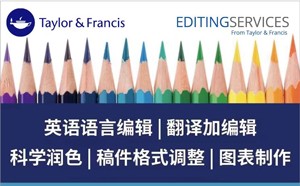

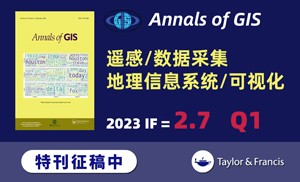

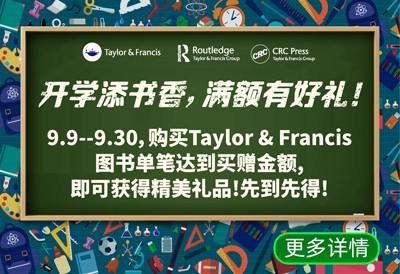

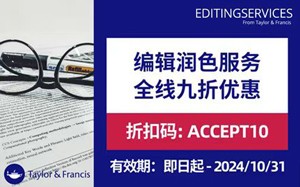

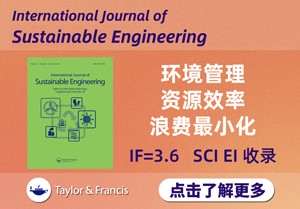
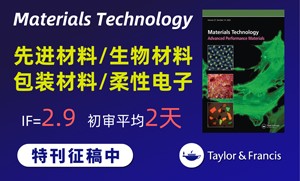

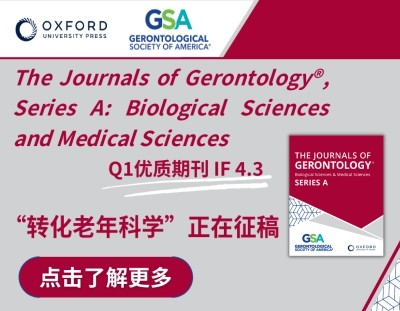
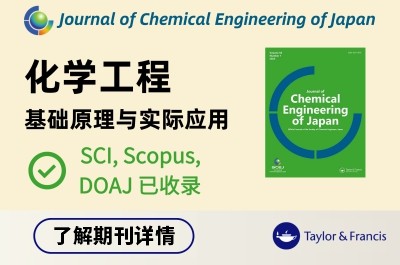






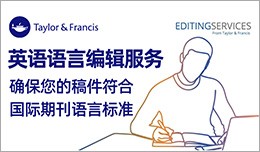

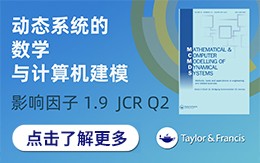



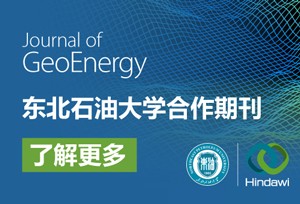
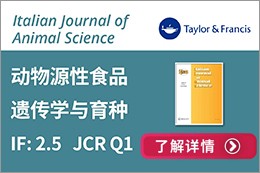
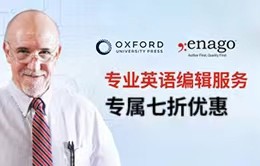



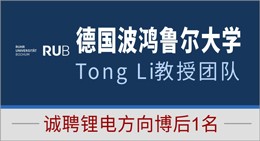
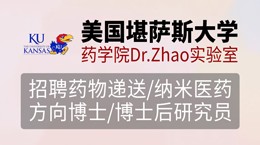
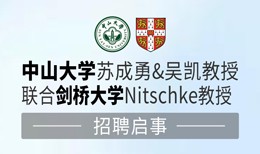
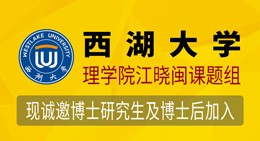
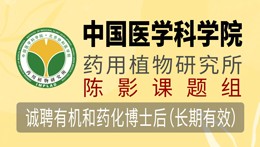





 京公网安备 11010802027423号
京公网安备 11010802027423号